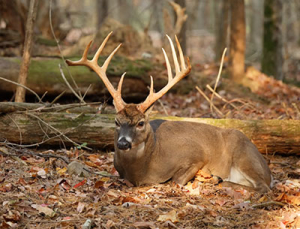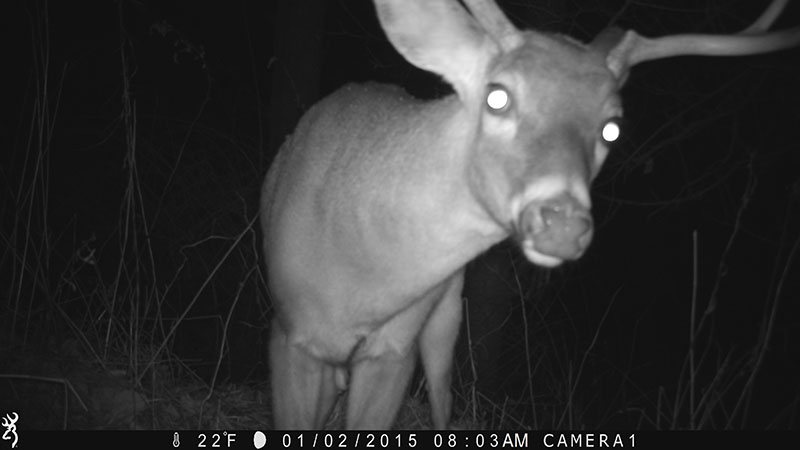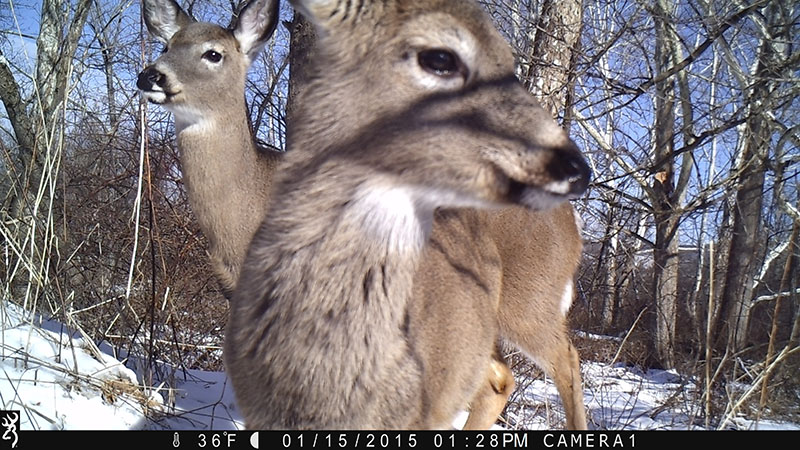 Preferred Bedding Preference of Whitetail Deer
Preferred Bedding Preference of Whitetail Deer
A lot has been written and discussed lately about deer bedding areas. Some even claim to have the secret method to making a buck bed in a particular place. I don’t know about that – all I know is what I00% of the time, when I pick up where I left off at the job, I will see beds at the edge of what I cut the day before. The thick brush created by the cutting operations provide a barrier to the back side of the bed and the open timber provides a view to the front. One bed comes to mind that I assumed to be a buck since it was big and alone with very few deer in the area – as is the case with much of Pennsylvania State Forest land these days. I finished cutting for the day very neer a steep slope. It snowed a few inches the next day and when I went back to work the following day I noticed a big bed at the edge of the cutting that allowed some view of the slope downhill. The wind was in his face – the perfect bed site.
I often see beds in level terrain on whatever hump of land is available – old root balls from long ago blown down trees, high spots in swamps. Anything that improves the view. Recently, I noticed a bed on a piece of old dike next to a river in New York. This high spot provided grass cover and a view of the surrounding terrain and an escape route down the river bank. My brother kicked a deer off of it while hunting – all he saw was the ass end of a deer disappearing off the hump. The deer could get out of site and run along the river in a second. An unapproachable spot. We set up a trail camera to see what was using it. It was a favorite spot of this buck fawn, sometimes his mother and an 8-pt buck who did not like the camera being so close.
Also, a fox frequented the spot for a good look around.
If I were going to go into a property and “create” bedding areas I would first find the most strategically beneficial spot. If I were in a battle, lets say with some heathen ragheads, for instance, where would I set up to rest so they couldn’t sneak up on me? That’s your starting point. Next, I would create some back cover. I feel that deer like to have some interfering cover to there six so a mountain lion cannot creep up and give ’em a fang to the neck. You also need some flat spots with no rocks so pick the high and dry spots around and level them and pick the rocks out if you can. Most of PA mountain land is made of sandstone ruble so this can be a tall order.
Most deer in my area – the ridge and valley region of PA- bed on steep hillsides near the top of the ridge in the mountain laurel. You can’t see them, you can’t sneak up on them. They are safe in there and during hunting season will not come out much at all.
If you can create an area they like just as much and then create an area of great feeding opportunities with some staging areas in between, and don’t disturb them very much, you can possibly create a situation where deer can be hunted in between feeding and bedding. But to say that you can create a place where bucks bed as opposed to does, I don’t know about that. Other than, if there is room, bucks want to be more isolated and not bothered by does much. Think of times when you had a long hard day at work and you just want to sit in your man cave and watch the outdoor channel by yourself – thats probably how bucks feel after the rut.
According the Jeff Sturgiss – a real thinker when it comes to deer habitat – does will bed close to food and bucks out beyond them. Sounds reasonable since I never see bucks near does in winter. Generally, they won’t even come to feeders. Does set up their family groups in winter and divide up the territory, probably the best spots going to the boss doe and her progeny. If appropriate cover is available they will set up close to available feed. I had a feeder set up years a ago in a valley where three trails came from the laurel ridges from 3 directions and one from a nearby pine thicket. This is a good way to estimate deer populations – just count each doe group as they are bunched up in winter. Observing them at feeding sites if possible can educate you on what the herd composition looks like, recruitment rates, dominant does and sex ratios, keeping in mind that older bucks probably won’t go to a feeder at all or a field until dark and spend most of their time still.
I have a feeder with cameras set up for winter and will see if any bucks show up there. Will post pics when I can.
Thanks for your interest. If you have anything to discuss, comments, advice, or if you would like to schedule a site visit, give me a call: 814-360-4510 or email: schilcote1223@gmail.com



